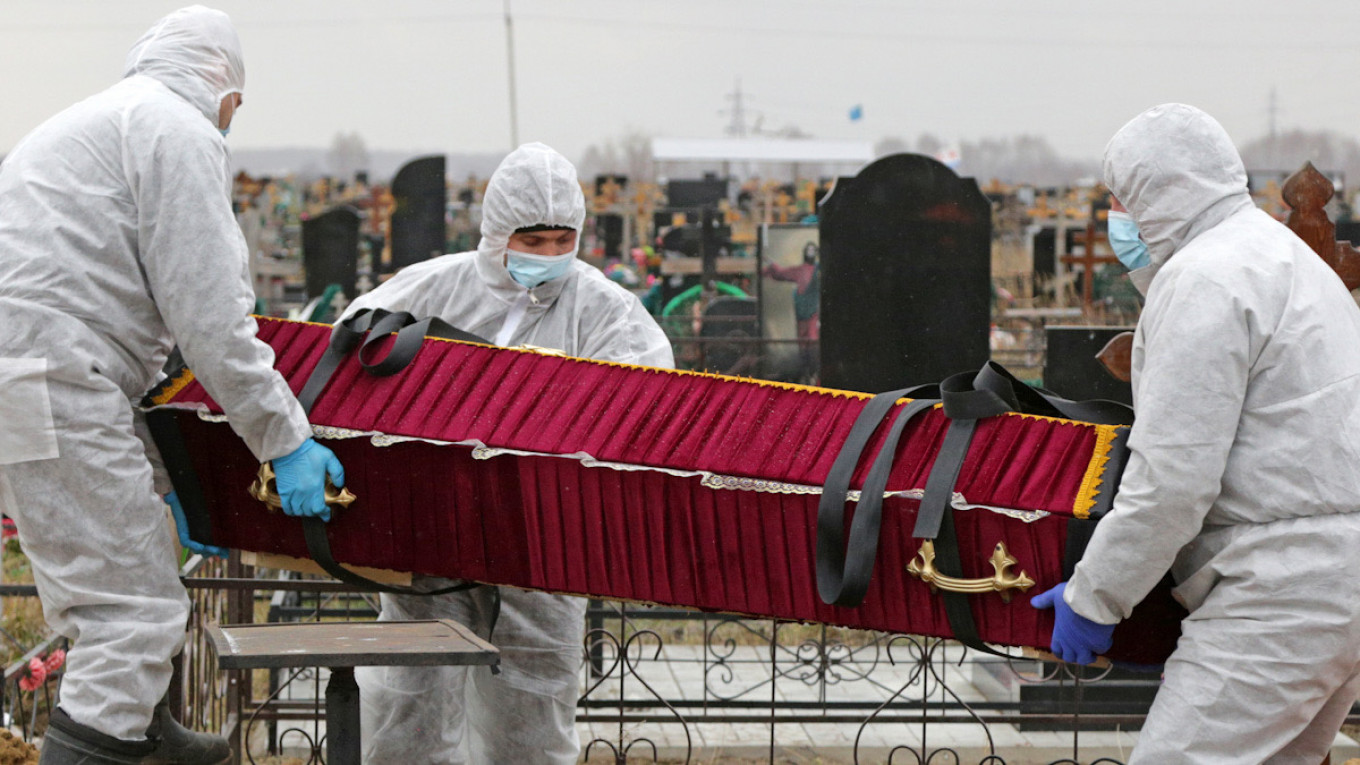
Russia recorded almost 120,000 excess deaths between the outbreak of the coronavirus pandemic and the end of September, official statistics on fatalities published Friday revealed.
Russia’s federal statistics service (Rosstat) said a total of 9,798 people with Covid-19 died during September, the latest month for which figures are available. This was up from the 7,463 seen in August, which marked a lull in the number of reported infections across the country.
However, in a counting process that runs contrary to World Health Organization (WHO) guidelines, Rosstat added that in 4,599 cases — or 47% of the total — coronavirus was not deemed to have been the main cause or to have even played a role at all.
But Russia’s coronavirus statistics have been heavily questioned since the very start of the pandemic, and analysis of deaths by all causes — the excess deaths methodology considered to be the gold standard in terms of understanding fatalities from the coronavirus — shows that Russia recorded 31,666 more deaths in September 2020 than in the same month last year.
That tally is the highest single-month number of excess fatalities this year. Compared to a five-year average of September deaths, 2020 came in more than 26,000 higher. Pointing to Russia’s rapidly declining fatality rates, statisticians say comparisons with 2019, rather than a five-year average, can provide a more accurate picture of how far fatalities are running above usual levels due to the coronavirus.
The latest numbers take Russia’s total excess death toll since the start of the pandemic to more than 117,000 — a jump of more than 11% — and far above any of the competing official death tallies published by Russian authorities.
It also only runs until the end of September, since when the coronavirus has accelerated rapidly — with the country setting new records for daily infections at almost twice the level seen during the first wave, raising fears that October and November could be significantly more deadly.
The second wave is hitting Russia’s regions especially hard, accounting for more than two-thirds of all new infections — a reverse of the situation seen in the spring when Moscow accounted for the majority of Covid-19 cases.
The numbers game
The figures also question Russia’s politicians’ statements that Russia has a lower mortality rate from the infection than other countries and highlight the confusing and competing tallies of coronavirus statistics that Russia pushes out.
For instance, state media have pointed to Russia’s success in fighting the virus, citing mortality statistics which are tallied by the country’s coronavirus taskforce and updated daily.
Those figures, provided by health authorities, are seen as highly unreliable. Statistician Tatiana Mikhailova told The Moscow Times the quality is so poor, that “it makes no sense to draw medical, virological, or epidemiological conclusions from them.”
The Rosstat numbers are seen as slightly more reliable, as they are based on death certificates officially submitted days after a person has succumbed to the disease. Those imply a case mortality rate in excess of 5.6% among all confirmed patients, compared to 2.1% shown by the taskforce numbers.
But even the Rosstat tally has been criticized and could be significantly undercounting coronavirus fatalities. It separates deaths where coronavirus was deemed the main cause, a contributory factor or did not play any role at all. Since the start of the pandemic, Rosstat has counted a total of 55,461 deaths among Covid-19 patients, but claims only 57% were the result of the infection, and in almost a third of all cases, it claims coronavirus played no role whatsoever in a patients’ death.
The WHO has criticized that approach and advises governments that any fatalities of Covid-19 patients should be considered as resulting from the disease, except in instances where it clearly played no role — for instance, trauma injuries.
Excess deaths — seen as the most reliable measurement of a country’s coronavirus fatalities because it strips out potential classification disputes based on how authorities choose to officially count coronavirus-related deaths — shows a potentially much-bleaker picture, running at just above 117,000 since the beginning of April compared to 2019 levels.
